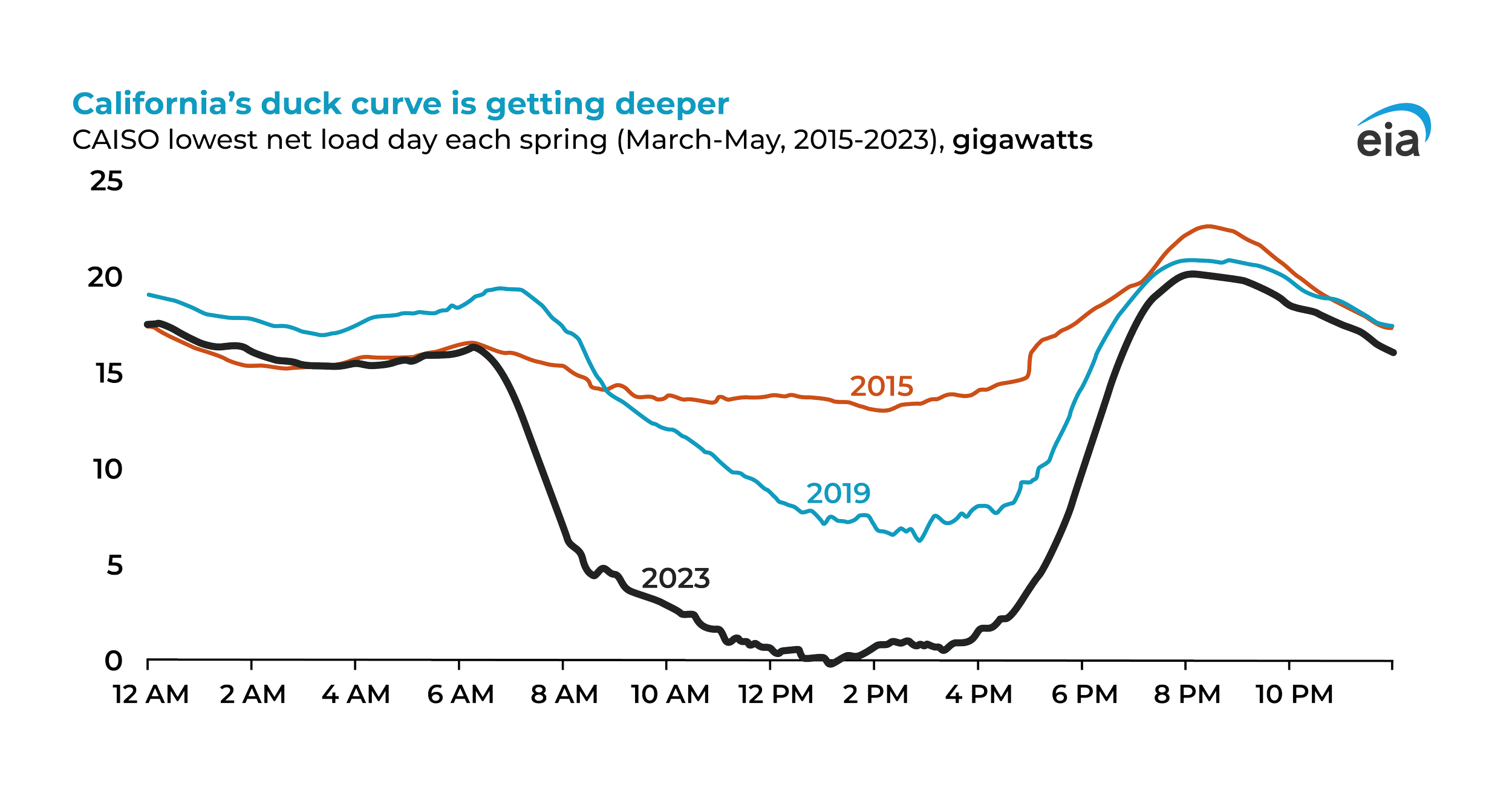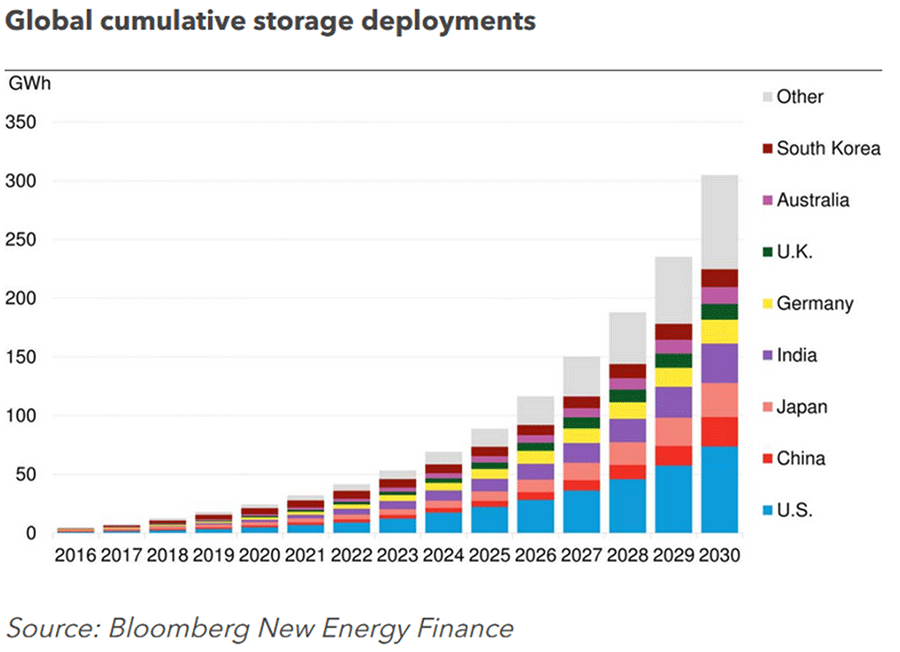
A Novel Solution to Energy Storage
Our PTES is based on a high-pressure, positive-displacement, multi-cylinder ‘compressor-expander’ machine. In the charging cycle, the system uses electricity to run the compressor, raising the pressure and temperature of an operating gas. Thermal storage material is heated by the gas in a heat exchanger and the material can be stored in an insulated storage silo at atmospheric pressure. The gas leaves the heat-exchanger and enters the expander where it drops in pressure and in temperature.
A second heat exchanger allows the cold gas from the expander to cool another flow of storage material. The very cold material then leaves the heat exchanger and is sent to a cold storage silo.
The gas then returns to the compressor and the cycle continues until the full storage depth has been met or the operator chooses to only partially charge the system.
In the discharging cycle, everything reverses: the gas and the material flows change in direction, the compressor becomes an expander, the expander becomes a compressor, and the electric motor becomes a generator to return energy to the grid.
Schematic of PTES system during charge (storing energy)
Schematic of PTES system during discharge (generating back to network)
PTES Concept
-
PTES ensures minimal energy loss during charging, forecasting energy loss from storage silos to be negligible. By employing cutting-edge insulation technology, loss can be mitigated to less than 0.5% per day during dormant periods, ensuring optimal energy efficiency and cost-effectiveness.
-
In contrast to conventional energy storage solutions, the PTES architecture offers unparalleled flexibility by decoupling power rating from storage depth. This unique feature empowers us to tailor PTES installations precisely to the diverse needs of our clients across various industries. For instance, a wind farm operator may prioritize extensive storage depth to mitigate wind curtailment, while a solar farm operator may optimize for diurnal operation with a focus on 10-12 hour storage. Meanwhile, a peaking plant might opt for a shorter storage duration of approximately 4 hours. With its remarkably low marginal cost, PTES emerges as the most economically viable choice for applications requiring storage depths exceeding 10 hours.
-
PTES represents a paradigm shift in energy storage technology, transcending geographical and environmental constraints. It is inherently 'site agnostic,' capable of installation in virtually any industrial or light-industrial zone without imposing additional climatic or geographical requirements. With no hazardous materials involved and no emission of fumes during operation, PTES stands as a beacon of sustainable innovation. Its compact footprint, owing to high power density and vertical stacking, minimizes land requirements and poses negligible risk of land contamination, ensuring seamless decommissioning and site re-purposing.
-
Equipped with a synchronous motor-generator boasting robust 'fault ride through' capability, PTES fortifies grid resilience with unparalleled efficiency. Unlike conventional wind and solar plants reliant on electronic-power-converter connected generators, PTES leverages the innate resilience of synchronous generators. Its capacity to provide grid inertia presents a compelling solution to the challenge of dwindling spinning inertia in contemporary power grids.
-
With the ability to transition between operational modes in mere milliseconds, PTES emerges as a beacon of dispatchable generation, poised to revolutionize the ancillary services market. From peaking to frequency response, PTES seamlessly integrates into the grid, offering unparalleled responsiveness and reliability.
-
Backed by robust engineering and premium-grade materials, PTES boasts an extended service life, surpassing industry standards with ease. With minimal wear and tear under regular operation, supplemented by meticulous planned maintenance, PTES guarantees a plant life of at least 20 years—a testament to its enduring reliability and sustainability.
Duck Curve
-
As the push for electrification gains momentum, substantial investment in grid infrastructure becomes imperative to accommodate the burgeoning demands of heating and transportation. However, amidst this paradigm shift, energy storage emerges as a strategic solution to enhance the efficiency of existing network assets, mitigating the need for extensive infrastructure overhaul.
-
Recognizing the pivotal role of energy storage in grid optimization, network operators are increasingly incentivizing storage deployments to provide essential grid services. From short-term and long-term balancing to frequency regulation, reactive power management, inertia services, and black start provision, energy storage stands as a versatile asset in fortifying grid stability and resilience.
-
The relentless growth of wind and solar installations, exemplified by over 250GW added in 2021/22 alone, underscores the renewable energy sector's meteoric rise. However, the emergence of the notorious 'Duck curve' highlights the challenge posed by the increasing influence of solar generation. As renewables generate simultaneously, the time-of-day market price for electricity experiences a precipitous decline, reflecting the excess supply during peak solar generation hours.
-
In this dynamic energy landscape, energy storage emerges as a beacon of opportunity, offering a solution to the challenges posed by the Duck curve. By capturing surplus renewable energy during peak generation hours and storing it for later use during periods of high demand, storage solutions enable the maximization of value from renewable resources. Moreover, incentivizing users to flatten demand profiles through the utilization of long-duration storage further optimizes grid operations, ensuring a harmonious balance between supply and demand.
Market Size
The global energy-storage market is growing very rapidly and will continue to do so. BloombergNEF forecasts around 350 GW of storage installed by 2030, while Wood Mackenzie forecasts nearly one terawatt-hour by the same year.
Both expect continued exponential growth beyond 2030. Wood Mackenzie forecasts 706 GWh of ‘front of the meter’ (grid side) storage installed by 2030. Storage for small applications will almost certainly remain a battery application. Renewables backup is the major driver of the growth of storage and provides us with another metric for the market potential of the PTES system.
The IEA estimates that 95 % of the increase of global energy capacity over the next five years will be from renewable sources – more than half of this as solar photo-voltaic (PV) – reaching a total installed renewables capacity of 4.8 TW in 2026.
Although the energy generation industry is very conservative, the political enthusiasm for decarbonisation has grown from early lip service to enthusiasm (for the concept at least) to, recently, a very strong sense of urgency. We believe that, working with our industry stakeholders, SynchroStor’s PTES will gain a rapid market foothold.
Global Transition
The international commitments of governments to decarbonise their economies by 2050 requires very high penetration of renewably produced electricity and heat. As volumes grow, the consistent drop in price of such energy is an important element of market growth.
However, to deal with the consequent increases in intermittency of the delivered energy and to ensure that supplies are reliably and safely maintained, electricity networks need corresponding increases in storage and support services.
Whilst the traditional ways of operating and monetising network assets (generation, interconnections, and demand response systems) are changing, new energy-market structures and government incentives are attracting new actors such as storage and aggregated service suppliers.







